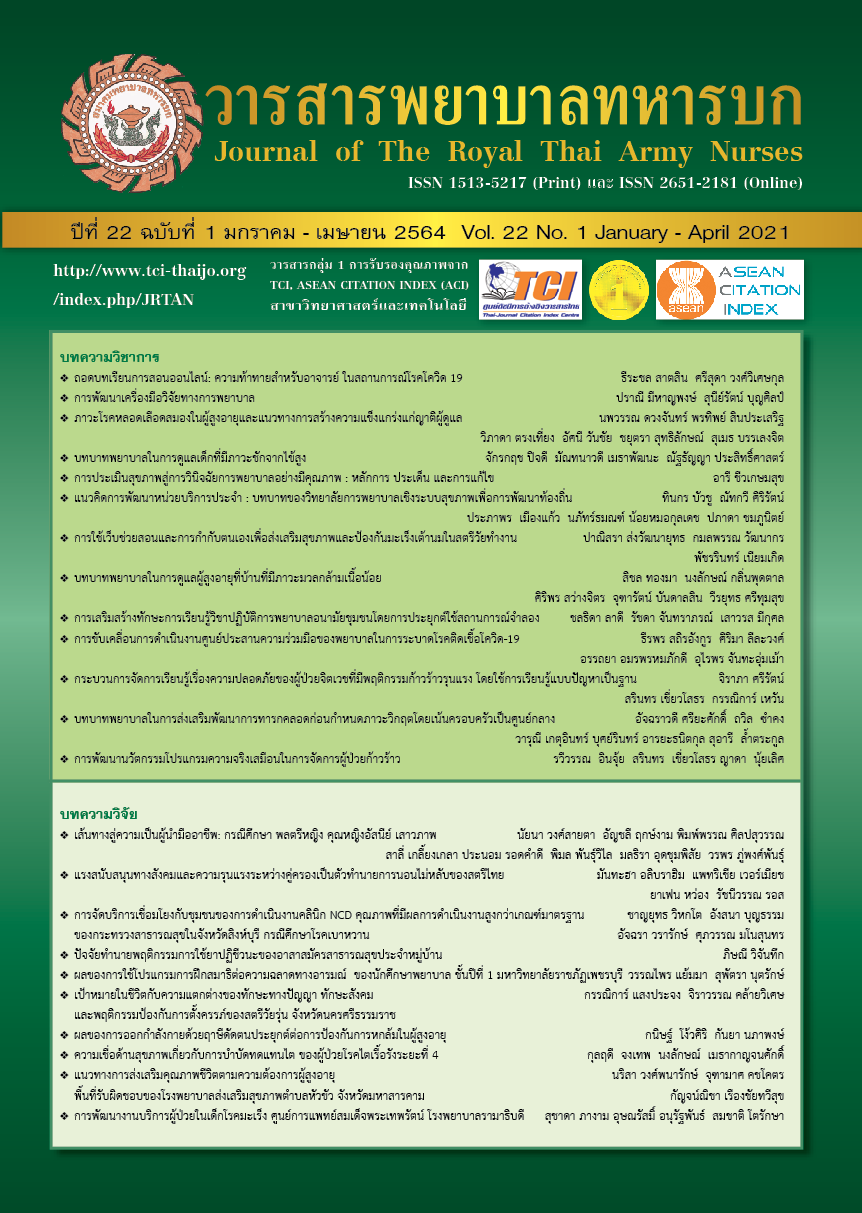A Longitudinal Study of the Relationship between Physical Fitness and Academic Achievement in Primary School Children
Keywords:
Primary School Children, Distance Run, Academic AchievementAbstract
This study aimed to examine the causal relationship between physical fitness, distance run, and academic achievement of Mathematics and English of primary school children in grade 4-6 during three academic years, 2017-2019. A total of 170 fourth graders of the demonstration school of Ramkhamhaeng University was randomly selected to participated in a 3-years follow-up study. Registered-based academic achievement scores and physical fitness were assessed in the second semester of academic year 2017-2019. Distance run was measured with a maximal 1,200 meter run test having content validity and reliability of 0.825. The latent growth curve modeling was applied to analyze the causal relationship between a physical fitness and two subject achievements with gender as a covariate. The results revealed that gender and distance run had a significant influence on Mathematics and English scores of primary school children. An increase in distance run in each year resulted in a greater improvement in Mathematics (βF2 F4 = -.48, p = .001) and in English scores (βF2 F6= -.32, p = .004). Boys had improvement in distance run higher than in girls (βG F2 = -.20, p = .006). Effects of distance run on Mathematics achievement were stronger in boys (βG F4 = -.26, p = .008) than in girls. Whereas effects of distance run on English scores were stronger in girls (βG F6 = .12, p = .021) than in boys during three academic years. The findings indicated the importance of physical fitness which affects students’ academic achievements. The primary school administrators should support physical education teachers and a school health nurse to evaluate standard physical fitness including health examination continuously in primary school children in every academic year.
Downloads
References
Buachu T, Solphet N, Muangkaew P, Chomphunit P, Chayathab S. Transformative learning: Applying to nursing administration and management subject. Journal of The Royal Thai Army Nurses 2020; 21(3): 20-8. (in Thai)
Thongsri P, Chiangkhong A. Community health nurse’s roles in school health service. Journal of Public Health Nursing 2018; 32(2): 203-21. (in Thai)
Herholz B, Buskies B, Rist M, Pawlick G, Hollman W, Heiss WD. Regional cerebral blood flow in man at rest and during exercise. JAMA Neurol 1987; 234: 9-13.
Vaynman S, Ying Z, Gomez-Pinilla F. Hippocampal BDNF mediates the efficacy of exercise on synaptic plasticity and cognition. Eur J Neurosci 2004; 20: 1030-31.
Hillman CH, Castelli DM, Buck SM. Aerobic fitness and neurocognitive function in healthy preadolescent children. Med Sci Sports Exerc 2005; 27: 1967-74.
Ferris LT, Williams JS, Shen CL. The effect of acute exercise on serum brain-derived neuro-trophic factor levels and cognitive function. Med Sci Sports Exerc 2007; 39: 728-34.
Bass RW, Brown DD, Laurson KR, Coleman MM. Physical fitness and academic performance in middle school students. Acta Pædiatr 2013; 102: 832-37.
Lorenz KA, Stylianou M, Moore S. Does fitness make the grade? The relationship between elementary students’ physical fitness and academic grades. Health Educ J 2017; 76(3): 302-12.
Ramkhamhaeng University. Annual report 2019 of Ramkhamhaeng University Demonstration School (Elementary Level). Bangkok: Ramkhamhaeng University Press; 2019. (in Thai)
London RA, Castrechini S. A longitudinal examination of the link between youth physical fitness and academic achievement. J Sch Health 2011; 81(7): 400-8.
Wittberg RA, Northrup KL, Cottrell LA. Children’s aerobic fitness and academic achieve-ment: A longitudinal examination of students during their fifth and seventh grade years. Am J Public Health 2012; 102: 2303-07.
Bezold CP, Konty KJ, Day SE. Berger M, Harr L, Larkin M. et al. The effects of changes in physical fitness on academic performance among New York City youth. J Adolesc Health 2014; 55(6): 774-81.
Du Toit D, Pienaar AE, Truter L. Relationship between physical fitness and academic performance in South African children. South African J Resch Sport, Physi Educ Recre 2011; 33(3): 23-35.
Van Dusen DP, Kelder SH, Kohl HW, Ranjit N, Perry CL. Associations of physical fitness and academic performance among schoolchildren. J Sch Health 2011; 81(12): 733-40.
Zhang Z, Wang L. Statistical power analysis for growth curve models using SAS. Behav Res Methods 2009; 41(4): 1083-94.
Syväoja HJ, Kankaanpää A, Joensuu L, Kallio J, Hakonen H, Hillman CH, Tammelin TH. The longitudinal associations of fitness and motor skills with academic achievement. Med Sci Sports Exerc 2019; 51(10): 2050-7.
Samahito S. et al. Tests and norms of physical fitness for Thai children of age 7-18 years. Sport Science Bureau, Department of Physical Education, Ministry of Tourism and Sports. Bangkok: Sampachanya Publisher; 2012. (in Thai)
Schumacker RE, Lomax RG. A beginner’s guide to structural equation modeling. 4thed. New Jersey: Lawrence Erlbaum Associates; 2016.
Downloads
Published
How to Cite
Issue
Section
License
บทความหรือข้อคิดเห็นใดใดที่ปรากฏในวารสารพยาบาลทหารบกเป็นวรรณกรรมของผู้เขียน ซึ่งบรรณาธิการหรือสมาคมพยาบาลทหารบก ไม่จำเป็นต้องเห็นด้วย
บทความที่ได้รับการตีพิมพ์เป็นลิขสิทธิ์ของวารสารพยาบาลทหารบก
The ideas and opinions expressed in the Journal of The Royal Thai Army Nurses are those of the authors and not necessarily those
of the editor or Royal Thai Army Nurses Association.






